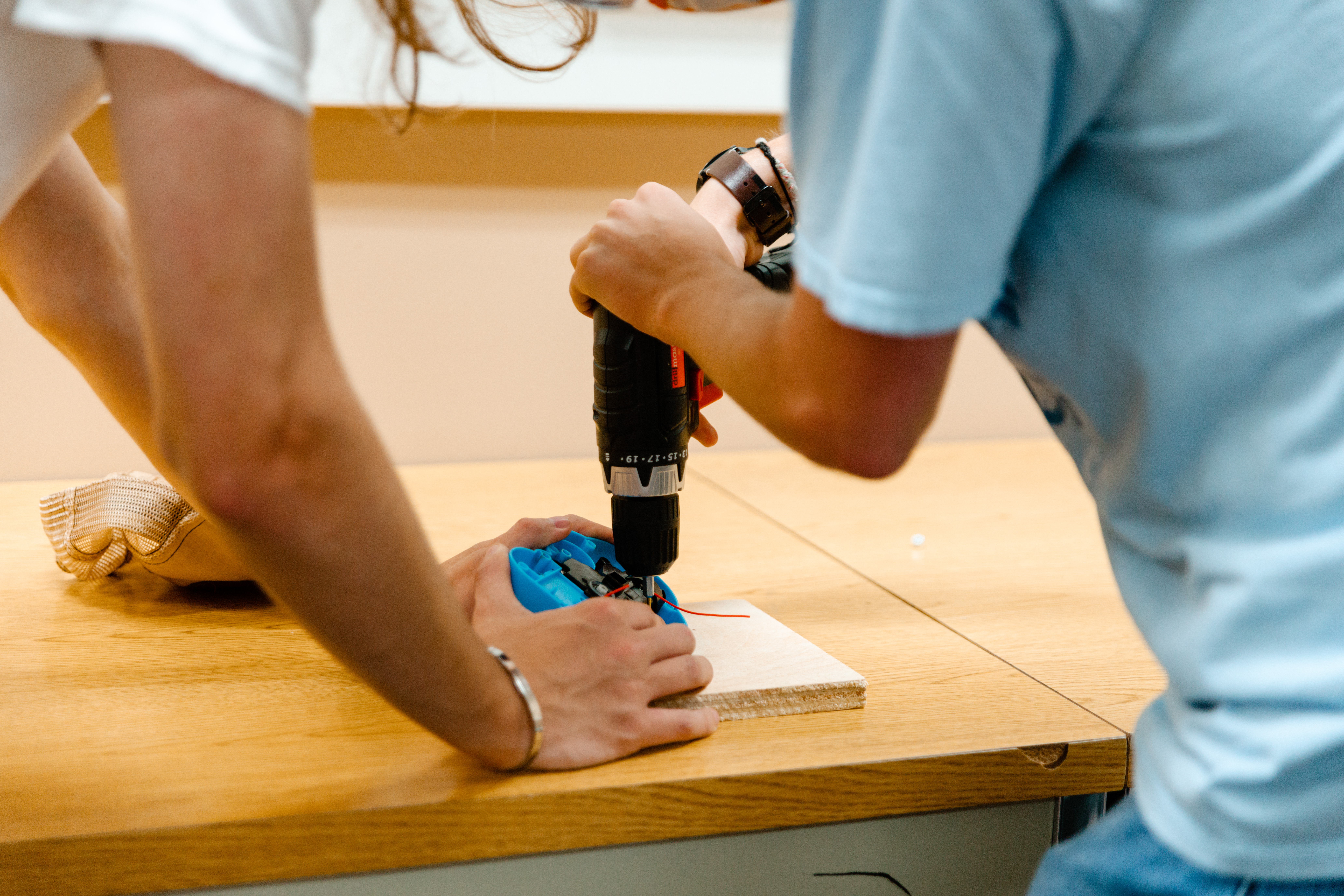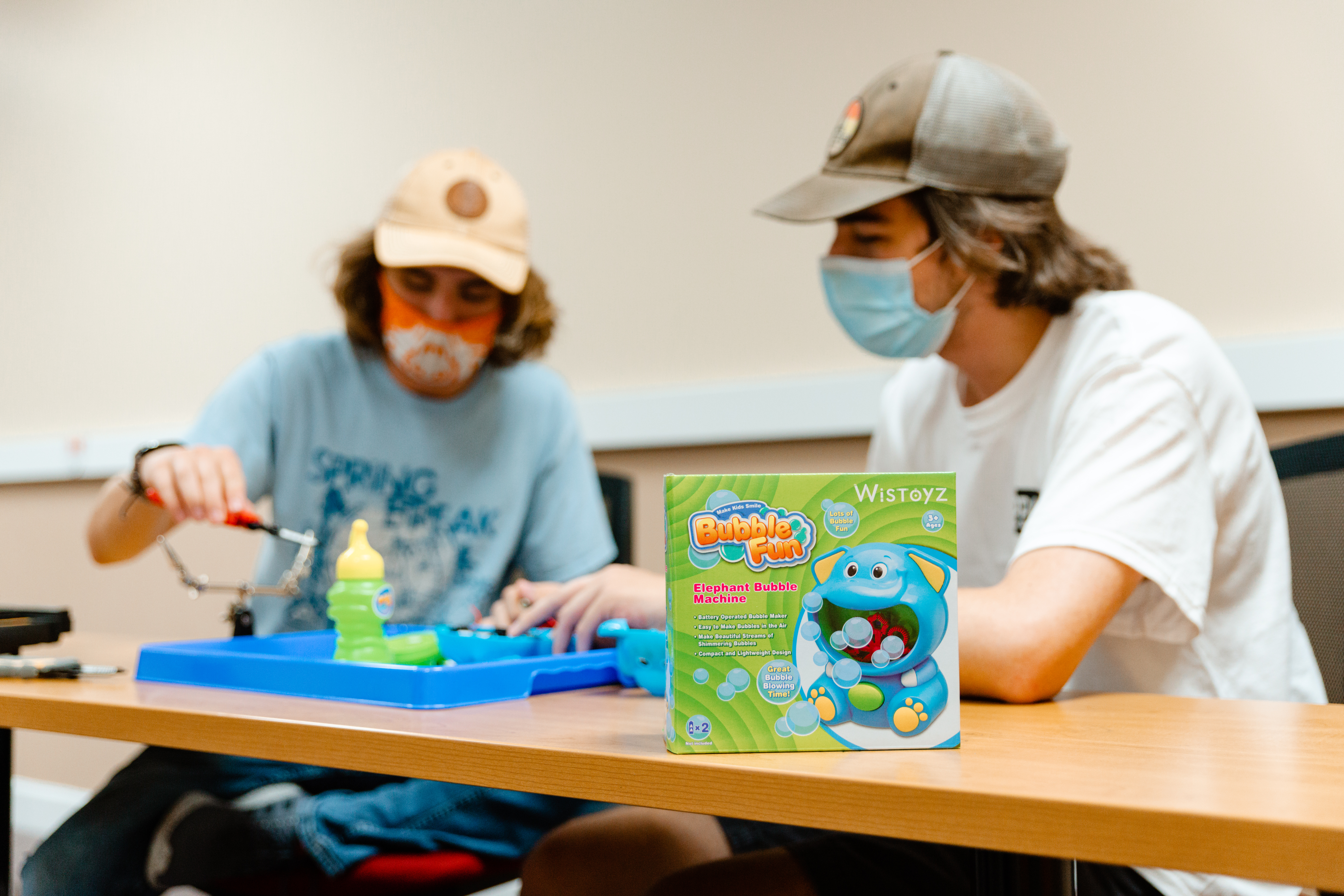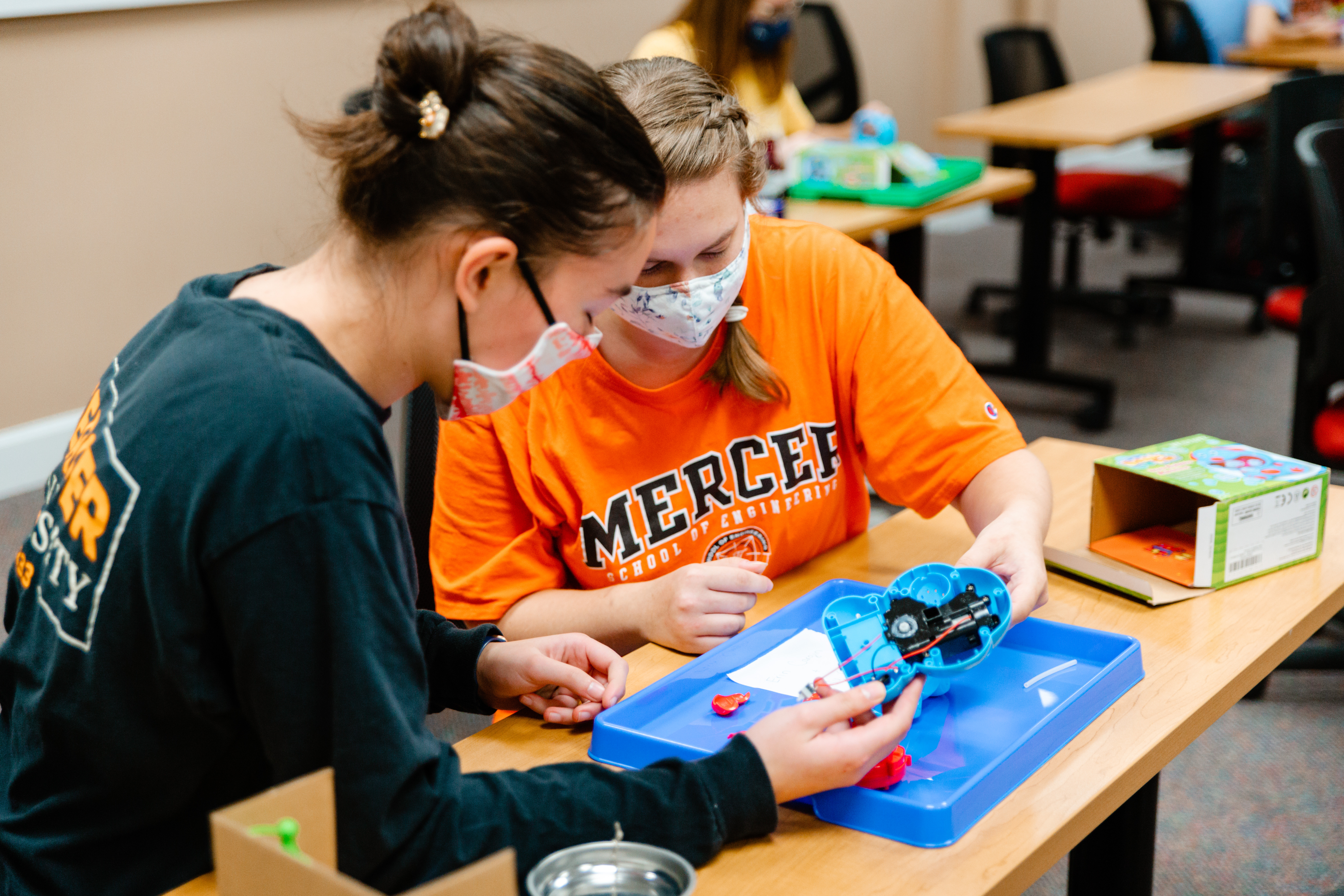Freshmen in Dr. Phil McCreanor’s engineering honors class have adapted toys that will be used in therapy for children with special needs.
The project is an extension of Mercer’s Go Baby Go program. Once a semester since fall 2016, students in the Engineering Honors Program have modified battery-powered toy cars for children with limited mobility. The team would have built its 100th car in spring 2020, but the build had to be canceled due to COVID-19, as did the fall 2020 event.
“In order to keep the momentum of Go Baby Go going, we had to shift the focus,” said Dr. Sybil Keesbury, associate professor in the Tift College of Education and a partner in the Go Baby Go project. “Since we can’t safely do vehicle builds, we decided to continue working with local therapists to ensure we’re doing something for children with special needs.”
Dr. McCreanor, environmental engineering professor and director of the Engineering Honors Program, worked with Lexi Dunn and Brian Sledjedski on their Engineering Honors Project to test and analyze several toys, switches and buttons for the project. It can be labor intensive and expensive to adapt toys, and a big part of the project was figuring out which products and materials would be most cost efficient. In the end, using a modified button dropped the project cost from more than $70 to about $15 per toy.
The bubble toy selected for the project comes in six different animal-shaped varieties, has eight wands that produce bubbles, and has a very small on/off button. Working in pairs, students opened up the toys, rewired them with new plugs and switches, removed four of the bubble wands, and reassembled the toys, so they looked brand new.

After these modifications, the toys are now activated using separate, large buttons that are easier for children to push and allow for more engagement. In the future, Dr. McCreanor hopes to modify additional toys from being battery-powered to running off a USB battery bank.
“(The project) engages the students in the community in a time where maybe we can’t engage as much as we’d like to or in the ways that we normally would,” Dr. Keesbury said. “It still gives them the chance to impact children’s lives in such a positive manner.”
The students in the class adapted 10 toys that are being distributed to Right on Track Pediatric Therapy at Navicent Health for occupational therapists to incorporate into their sessions with children. The toys get the children excited, and they’re learning without even realizing it, Dr. McCreanor said.
Some toys require the manipulation of buttons or features that a child may not have the dexterity or cognitive ability to activate, according to the team at Right on Track Pediatric Therapy. When a toy is adapted, children have an opportunity to play with something that they may not otherwise have had access to and learn from it, which can help meet therapy goals related to physical and cognitive performance and support communication and language goals.
“The adapted bubble blower has made a big difference for many of my patients in recent sessions,” said Miranda Gibson, occupational therapist at Right on Track Pediatric Therapy. “Seeing a child access a toy successfully and then using what is learned from that session to generalize a skill is what learning through play is all about. Not only can these adapted toys promote progress within a session, but they can also be used in the home setting to promote these outcomes outside of the therapy setting.”
Gibson said the bubble blower encouraged one of her patients to stand while engaging with it, and another to play with the toy purposefully rather than throwing it in frustration. The anticipation of the bubbles promotes increased language and communication within the sessions.
“It has provided the right amount of motivation for some of my more medically complex patients to fully engage in cause-and-effect play,” said Josey Thoreson, occupational therapist at Right on Track Pediatric Therapy. “I love watching the problem-solving in real time as their eyes shift from their hand on the switch to the bubble blower, their anticipatory excitement before the bubbles emerge and the smile that spreads across their face as the bubbles begin to blow towards them.”

Occupational therapist Macy Hollingsworth said she tried numerous switch toys to encourage engagement from a young patient with cerebral palsy with no luck. But five minutes after introducing the bubble blower, the child was independently pressing the button and understanding the cause and effect.
“I was able to place my patient in various positions to work on strengthening/postural control while continuing to be engaged and working on play skills simultaneously,” she said.
Dr. Keesbury said a Mercer education student is helping with a longitudinal research study to track the impact of these toys. Dr. McCreanor said his goal is to be able to give additional modified toys to families with children with special needs. Long-term, he’d like to see adaptive toys available for families to check out at libraries and rehabilitation offices.
Michelle Ferlita, a junior serving as Dr. McCreanor’s assistant for the course, said the project was something completely new for her as an accounting and finance major.
“It’s been a cool process to see. I’ve never done anything like this,” she said. “Not only are the students taking some engineering skills and getting hands-on experience, but they’re doing something that’s going to benefit the community. They can see how this is being adapted to help the children.”
Trevor Templeton, a freshman mechanical engineering major, said he’s done rewiring work before and enjoys it, but this was his first time building something that will help other people. He and his partner finished their toy adaptations early and were able to lend a hand to their classmates.
Marissa Heinsz, a freshman mechanical engineering major, said she has enjoyed rewiring electronics since she was a child. In fact, she customized her first toy when she was just 8 years old. The mission of this Mercer project makes it even more special.
“It’s not easy for (kids with special needs) to play with the toys that everyone else has,” she said. “It’s cool that we can give them the opportunity to play with the same toys as their peers.”











